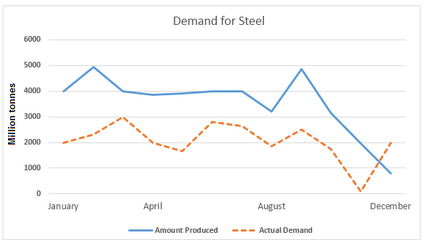Task 1
Summarize the information by selecting and reporting the main features, and make comparisons where relevant.

Sample Answer ▼
The first line graph presents a comparative analysis of the market requirement for steel and production of this material in 2010 in the UK. The second graph shows the total number of workers employed in this industry in the same year. Overall, the steel production in the UK in 2010 sur-plused the demand, except at the end of the year.
The production of steel throughout the time exceeded the demand. In the first quarter of the year, the actual market call for steel started at 2000 million tonnes in January, but production was two times with a continuous rise. Later somewhere in April, the demand started reducing, but production was soaring and reached 5000 million tonnes. Moreover, demand showed further fluctuations approximately till November and fell to almost zero whereas production of the steel attained plateau for some time with further variations and started falling later. After that, in December the demand was nearly double than the production.
From the second graph, it is evident that the total number of workers in the steel industry in the UK was 5000,000 in January and it rose for a month or so. But it then showed a sudden plunge and reached 3000,000 by April, with further fluctuations in number till August. However, the number of workers continued to fall and reached 1000,000 by the end of the year.

Comments
Post a Comment